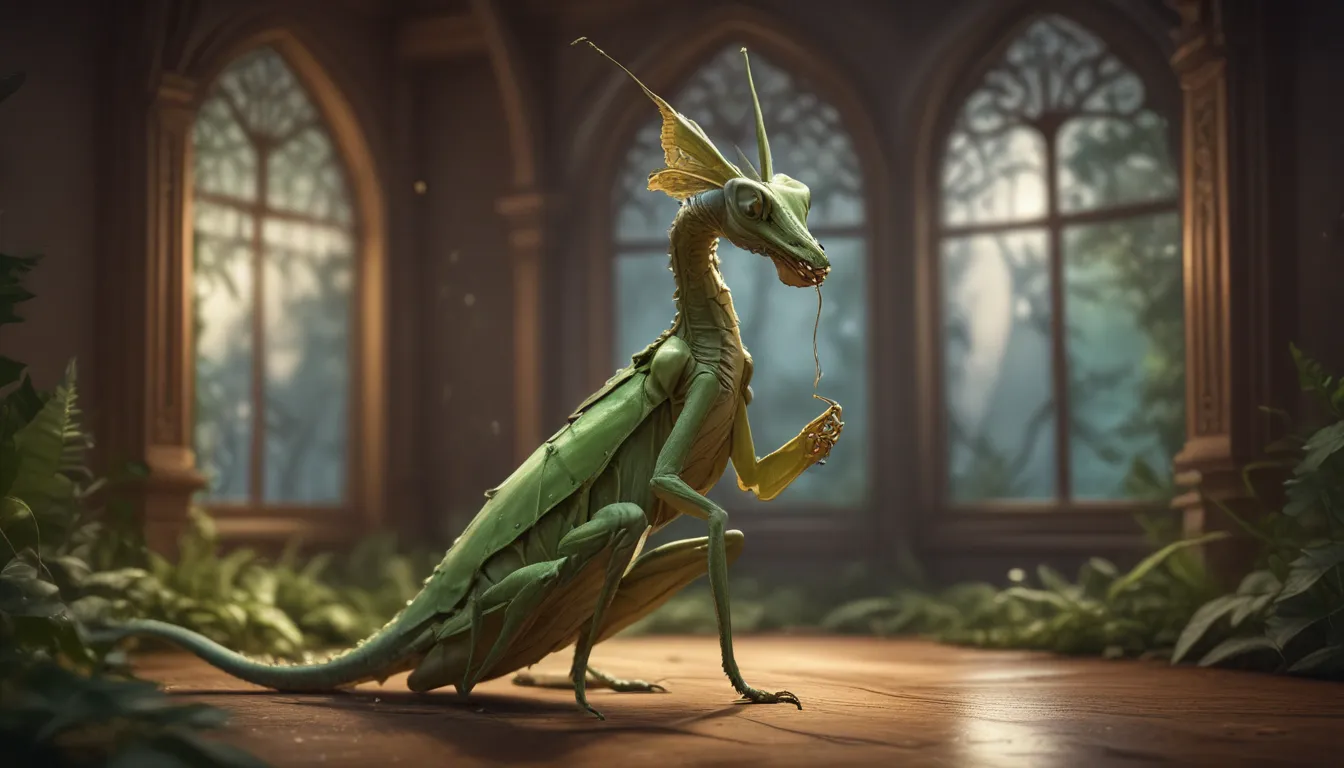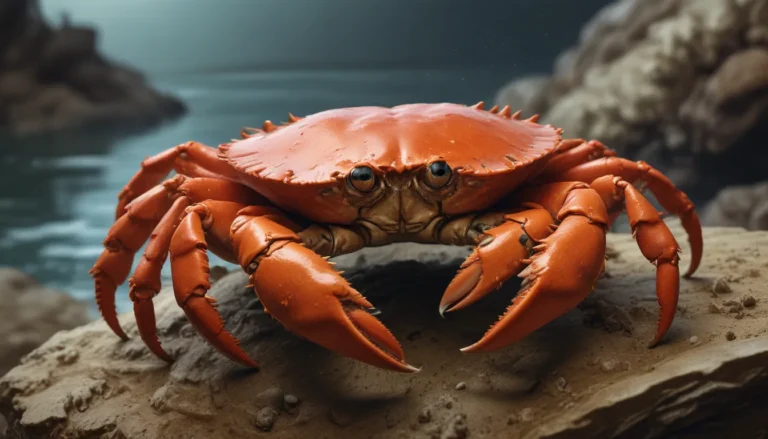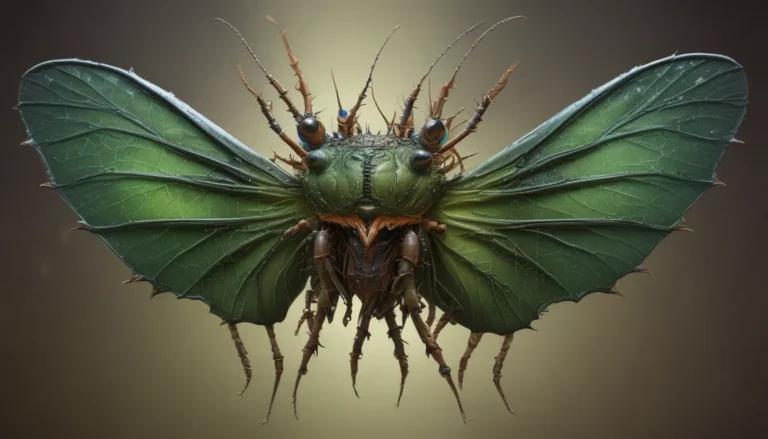The pictures we use in our articles might not show exactly what the words say. We choose these pictures to make you interested in reading more. The pictures work together with the words but don’t take their place. The words still tell you the important facts.
Have you ever paused to ponder the secret lives of those mysterious green and brown insects that inhabit your garden? Female praying mantises are extraordinary creatures, showcasing a unique set of traits and behaviors that rival those of any action hero. What sets these insect huntresses apart from their fellow backyard inhabitants? From their infamous mating rituals to their exceptional predatory skills, female praying mantises are truly captivating creatures. Are they as fierce as folklore portrays them? Do they truly deserve their deadly reputation? The answer is a resounding yes, with a plethora of fascinating facts awaiting our exploration. So, let's peel back the leaves and delve into the world of these incredible insects, uncovering truths as intriguing as they are compelling. Are you ready to embark on a journey and acquaint yourself with nature's very own femme fatales?
Key Insights into Female Praying Mantises
- Female praying mantises hold a commanding presence, being larger and more aggressive than their male counterparts. They utilize their size advantage to dominate prey and potential mates alike. Their cannibalistic mating behavior serves a crucial purpose of providing essential nutrients for their well-being and egg production. - These adept hunters have a diverse palate, feasting on a range of creatures such as flies, crickets, and even small vertebrates. Despite their relatively short lifespan, female praying mantises invest significantly in their offspring, exhibiting a remarkable dedication by laying multiple egg cases, each containing up to 200 eggs.
Unraveling the Unique Qualities of Female Praying Mantises
Female praying mantises are truly enigmatic beings, renowned for their distinctive hunting prowess and, notably, their mating habits. Unlike their male counterparts, female mantises exhibit a larger size and heightened aggression, essential for both survival and reproductive success.
-
Size Advantages: Female praying mantises tower over their male counterparts, leveraging this physical disparity to subdue not just prey but also potential mates.
-
Cannibalistic Courtship: The shocking phenomenon of female praying mantises consuming their partners during or after copulation is a pivotal aspect of their reproductive strategy. This seemingly brutal behavior is, in fact, a means to secure vital nutrients crucial for sustaining the female's health and facilitating egg production.
-
Egg-Laying Rituals: Following mating, a female praying mantis deposits hundreds of eggs enveloped in a protective foam-like substance she secretes. This protective casing shields the eggs from predators and environmental threats, ensuring the survival of the next generation.
Mastery in Hunting Techniques
Female praying mantises exhibit unparalleled skill in the art of hunting, utilizing their adept camouflage and lightning-quick reflexes to capture a diverse array of prey.
-
Stealth Ambush Tactics: Remaining motionless and blending seamlessly into their surroundings, female mantises patiently await unsuspecting insects to venture within striking range.
-
Precision Strikes: Upon detecting potential prey nearby, a female praying mantis employs her robust forelegs to execute a swift and lethal blow, ensnaring her target with specialized spikes along her limbs.
-
Diverse Diet: These remarkable creatures showcase a versatile palate, consuming insects ranging from flies and crickets to even small vertebrates like frogs, lizards, and hummingbirds.
Insights into Reproduction and Lifespan
The reproductive cycle and lifespan of female praying mantises unveil a fascinating narrative that parallels their predatory habits.
-
Brief Lifespan: Most praying mantises, including females, boast a lifespan of approximately one year. This condensed temporal window accentuates the critical nature of their reproductive phase in perpetuating their species.
-
Prolific Reproduction: A solitary female can engender multiple egg cases throughout her existence, each encapsulating up to 200 eggs, ensuring a prolific lineage.
-
Maternal Dedication: Despite their cannibalistic tendencies, female praying mantises exhibit considerable investment in nurturing their progeny, meticulously selecting secure locations for egg deposition.
Embarking into the Realm of Unique Physical Attributes
Female praying mantises flaunt an array of physical characteristics that distinguish them not only among other insects but also from their male counterparts.
-
Robust Forelegs: Boasting forelegs tailored for hunting, female praying mantises wield formidable appendages capable of fending off predators and rivals alike.
-
Camouflage Expertise: Displaying a remarkable ability to alter their coloration to blend seamlessly with their environment, females use this skill for both predation and evading potential threats.
-
Visual Acuity: Equipped with two prominent compound eyes and three simpler eyes, female praying mantises possess exceptional vision crucial for detecting prey movements and safeguarding against predators.
Delving into Cultural Significance
Praying mantises, particularly females, hold diverse symbolic meanings across different cultures, embodying traits of strength, power, and at times, danger.
-
Spiritual Guide: In various cultural contexts, praying mantises are revered as spiritual guides, leading individuals on paths of self-discovery and inner tranquility.
-
Symbol of Empowerment: Female praying mantises, epitomizing formidable hunting skills and the enigmatic cannibalistic courtship, often serve as symbols of female empowerment and autonomy.
-
Martial Arts Inspiration: The grace and efficiency exhibited by praying mantises have inspired a distinct style of martial arts, mirroring their precise movements and combat prowess.
Assessing Conservation Status
While female praying mantises captivate with their allure, they face challenges stemming from habitat loss and pesticide application.
-
Non-Endangered Status: Presently, praying mantises are not classified as endangered; however, human-induced activities impact their populations.
-
Beneficial Predators: Playing a pivotal role in pest regulation, praying mantises emerge as crucial allies in preserving agricultural and garden ecosystems.
-
Captive Breeding Initiative: Given their popularity in the pet trade, captive breeding initiatives help alleviate pressures on wild populations, ensuring sustainability.
Interactions with Humanity
Although female praying mantises pose minimal threats to humans, their presence elicits a blend of benefits and trepidation.
-
Pest Management: By preying on common garden pests, praying mantises contribute to maintaining garden and crop health without necessitating chemical interventions.
-
Bite Potential: While rare, female praying mantises can inflict bites when provoked or handled; however, such bites pose no significant harm to humans.
-
Fascination and Apprehension: Drawing attention with their unique demeanor and behaviors, female praying mantises evoke both intrigue and apprehension, becoming subjects of study and, at times, superstition.
Enshrining in Popular Culture
Praying mantises, notably females, have etched their presence across various realms of popular culture.
-
Cinematic and Television Portrayals: Frequently depicted as formidable entities in science fiction and horror genres, praying mantises, at times, feature as monstrous adversaries.
-
Literary Depictions: In literature, praying mantises symbolize mystery, peril, and metamorphosis, weaving a tapestry of intrigue.
-
Artistic Endeavors: Inspiring artists with their unique form and poise, praying mantises often serve as motifs in jewelry, sculptures, and emblematic designs.
Female praying mantises, with their enigmatic behaviors, physical traits, and cultural implications, continue to captivate and intrigue enthusiasts who delve into their world. From their pivotal role as predators in ecosystems to their distinct reproductive panoramas and human interactions, these creatures embody a captivating subject of study and admiration.
A Profound Insight into the Mystique of Praying Mantises
Embarking on a voyage through the realm of female praying mantises has unfurled a saga of fascination. These creatures, with their lethal allure and captivating mating rituals, reign supreme in the insect domain. We've deciphered how their cannibalistic propensities, far from mere savagery, signify a vital mechanism for survival, ensuring the propagation of resilient genetic lineages. Their adept camouflage skills and patient hunting strategies underscore a profound adaptation to their environs, attesting to their eminence as apex predators. Embracing these insights enriches not only our comprehension of nature's intricacies but also deepens our reverence for the delicate ecological harmony. Female praying mantises, epitomizing a blend of beauty, ferocity, and eccentric behaviors, truly exemplify nature's intricate tapestry. The next time you encounter one, you won't merely perceive an insect but witness a masterpiece of evolutionary marvel.
Frequently Asked Questions
Q: Why do female praying mantises sometimes consume their mates?
A: Female praying mantises engage in this behavior to procure essential nutrients vital for egg laying, reinforcing the prospects of their offspring's survival.
Q: How can you differentiate between male and female praying mantises?
A: Female praying mantises typically exhibit a larger and bulkier physique compared to their male counterparts, who sport elongated antennae and fewer abdominal segments.
Q: Do female praying mantises solely engage in mate consumption?
A: Contrary to popular belief, female praying mantises have diverse dietary preferences, encompassing an array of insects, from moths and crickets to even other mantises.
Q: What is the average lifespan of female praying mantises?
A: These intriguing creatures traverse a relatively short lifespan, spanning about 6 to 12 months, during which they evolve from diminutive nymphs to formidable predators.
Q: Can female praying mantises fly?
A: While both male and female praying mantises possess wings, males exhibit greater proficiency in flight. Females, due to their bulkier physique, engage in flight sporadically, primarily for evasive maneuvers.
Q: What role does color play in the life of a female praying mantis?
A: Color constitutes a pivotal aspect of a female praying mantis's existence, aiding in camouflage for predatory purposes and communication. Some species can morph their coloration to blend seamlessly with their surroundings, showcasing exceptional adaptive prowess.
Q: How do female praying mantises safeguard their eggs?
A: Female praying mantises exhibit meticulous care in protecting their eggs, encapsulating them within an ootheca, a durable casing that shields the eggs from external perils, fortifying their offspring's chances of survival.
By unraveling the enigmatic world of female praying mantises, we not only gain insights into their captivating existence but also foster a deeper appreciation for the marvels of the natural world. Let's continue our exploration of these remarkable creatures, delving into the intricate tapestry of their lives and uncovering the wonders that await.






